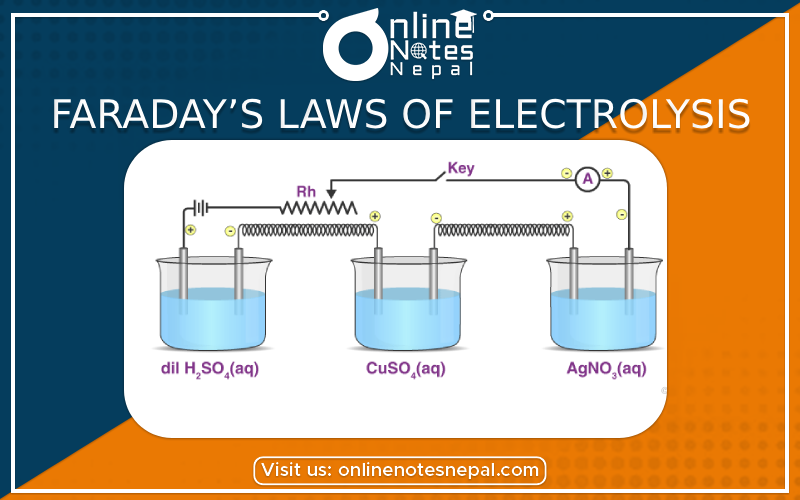Published by: Nuru
Published date: 25 Jun 2021

Faraday’s laws of electrolysis are the quantitative laws used to express magnitudes of electrolytic effects. It was first described by Michael Faraday.
The weight of substance deposited, dissolve or liberated at electrodes (at the cathode) during electrolysis is directly proportional to the amount of charge passed through the electrolyte. If W be the weight of substance deposited and ‘Q’ be the amount of charge passed through the electrolyte, then, according to this law:-
IN α Q
or, IN= QZ
where Z is the proportionality constant called electrochemical equivalent.
or, W= ZIt…….. (i)
where I= current ampere
t= time in second
If I= 1A and t= 1sec then eqn (i) becomes IN= Z
Thus, electrochemical equivalent (ECE) is defined as the weight of substance deposited when one-ampere current passes through the electrolyte for one second.
The passage of one-ampere current through the electrolyte for one second is also called one-coulomb charge. Thus ECE also may be defined as the weight of substance deposited when one-coulomb charge passes through the electrolyte.
Statement: The weight of different substances deposited at different electrodes, when the same amount of electrode, connected in series is directly proportional to their chemical equivalents or equivalent weights. Mathematically, it can be expressed as:-
WαE
or, W= kE
where,
W=weight of a substance deposited
E= Equivalent weight
k= proportionality constant
ThereforeWE=K–––(I)suppose W1E1=k and w2E2=KTherefore W1E1=W2E2––––(ii)